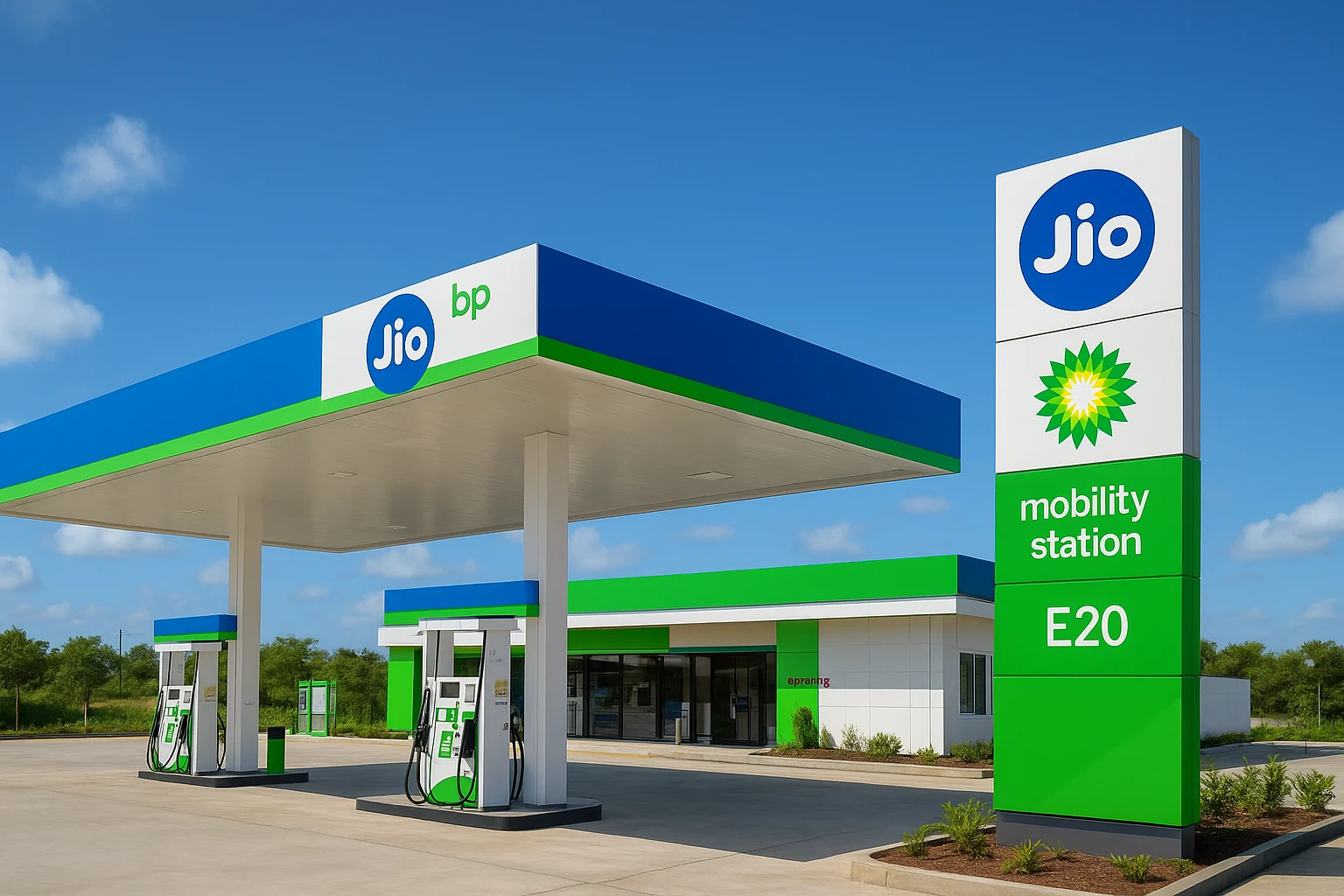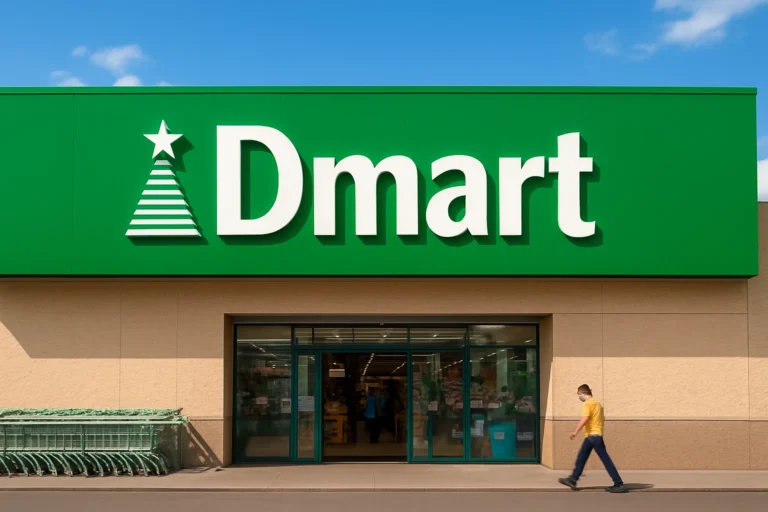Outline
- Introduction / The Big Picture
- Recent Developments and News Updates
- Case Study: First Mobility Station & EV Charging Strategy
- Comparison: Jio-bp vs Other Fuel Retailers
- Franchise / Dealership Funnel: Costs, ROI & What Aspiring Partners Should Know
- Challenges & Opportunities
- Future Outlook & What to Watch
- Conclusion
Blog Post
1. Introduction: The Big Picture
India’s fuel retail sector is undergoing rapid transformation. The push for cleaner fuels (e.g. E20 blending), electrification, and customer experience are changing what “just a petrol pump” means. In this context, Jio-bp Mobility Stations (a joint venture between Reliance Industries and BP) are positioning themselves not just as fuel retailers but as mobility hubs that combine fuel, EV charging, convenience services, and digital innovation.
This post takes you through what Jio-bp is doing now, how it stacks up against traditional players, what the franchise model looks like, and whether investing in one makes sense.
2. Recent Developments & News Updates
Here are the latest key moves and updates:
| Update | Description | Implications |
| Adani Total Gas & Jio-bp Partnership | In June 2025, Jio-bp and ATGL (Adani Total Gas Ltd) entered into a strategic partnership: select ATGL outlets will start selling Jio-bp’s premium petrol/diesel; conversely, some Jio-bp outlets will add ATGL’s CNG dispensing units. | This widens fuel type options for customers, improves fuel network density, helps in meeting varying fuel preferences (especially for CNG users), and boosts reach into areas where Jio-bp or ATGL alone were weak. |
| E20 Fuel Rollout | Jio-bp has started initial rollout of E20 blended petrol (20% ethanol, 80% fossil petrol) at select stations. | Aligns with govt target of scaling up ethanol blending; more sustainable; may affect vehicle performance/mileage perceptions; regulatory compliance will become a competitive differentiator. |
| EV Charging & Mobility Station Model | Their first Mobility Station was opened at Navde, Navi Mumbai (Oct 2021), incorporating multiple fueling options, EV charging infrastructure, convenience store (Wild Bean Café), food options, lubricants, etc. | Demonstrates a hybrid approach: fuel + non-fuel revenues + digital customer experience. EV charging is a growing value stream. |
| Network Partnerships / Infrastructure | Jio-bp is expanding its outlet count (goal ~5,500 by 2025) for its rebranded fuel stations from existing Reliance and BP assets. Also, partnerships like with ATGL extend their network. | Scale matters: higher density reduces cost per pump, increases brand visibility, more bargaining power for fuel procurement etc. |
3. Case Study: First Mobility Station + EV & Sustainability
Location: Navde, Navi Mumbai — the first Jio-bp Mobility Station.
Features:
- Multiple types of fuel including traditional petrol/diesel plus “additivised” fuels with ACTIVE technology for engine protection.
- EV charging & future low-carbon mobility solutions built in.
- Convenience retail (Wild Bean Café etc.) and amenities for on-the-go customers.
Insights:
- Customer Experience & Differentiation: By integrating non-fuel services (food, lounge, EV charging), Jio-bp aims to increase dwell time, cross-sell, and customer loyalty.
- Regulatory & Environmental Alignment: E20 blending, EV infrastructure, sustainability initiatives that align with policy push.
- Cost & Operations Complexity: Mobility stations are heavier investments (land, infrastructure, EV chargers, maintenance), and require managing diverse supply chains.
4. Comparison: Jio-bp vs Traditional Petrol & Fuel Retailers
| Feature | Jio-bp | Traditional State-owned Pumps (IOC, BPCL, HPCL, etc.) | Other Private Players / Global Brands |
| Fuel Quality & Innovation | Using additivised fuels; early E20 rollout; transparency of fuel type and blending in many outlets. | Varies: many still using standard fuels; some adoption of blends. State players have scale but slower innovation. | Some like Shell, Nayara etc. also push premium fuels; more boutique/convenience-oriented. |
| Customer Experience / Convenience | Mobility Stations with convenience retail, food, digital payments, EV charging. | Mostly fuel + basic store; less EV charging; fewer premium services. | Varies; premium brands often match or exceed in experience, but not always density or pricing. |
| Network & Reach | Growing rapidly; target large expansion; partnership strategy (e.g. with ATGL). | Already large infrastructure; very deep presence especially in remote/rural areas. | Some private players strong regionally; global brands limited coverage in India. |
| Pricing / Margins | Likely higher upfront capex; margins might be thinner early on but compensated by non-fuel services and scale. | More government oversight; margins regulated; possibly lower investment risk. | Private/foreign might have higher margins but also higher cost of doing business (import, brand licensing etc.). |
| Sustainability & Regulatory Compliance | Proactive: E20, EV, CNG tie-ups. | Catching up; state entities often have mandates but slower execution. | Mixed; some lead, some lag. |
5. Franchise / Dealership Funnel: What It Takes & What You Get
For readers thinking of becoming a Jio-bp fuel station franchisee / dealer, here’s what the picture looks like based on recent data and estimates. (Note: numbers may vary regionally & over time.)
| Item | Estimate / Requirement | Notes |
| Land / Location | Must own or lease with necessary approvals, preferably near highways, high traffic, visibility. | Location is the biggest determining factor of volume. |
| Capital Investment | • Small / Rural format: ~ ₹50-75 lakh for limited infrastructure. • Full scale / highway / mobility station format: ₹1.5-3+ crore depending on land cost, infrastructure, amenities. • Security deposit / franchise fee: in some news ~ ₹30-35 lakh plus other one-time fees. | Higher investment if adding EV charging, convenience store etc. |
| Ongoing Costs / Royalty | Brand / royalty commission of ~0.5%-1% of fuel sales in some models. | Also costs for staff, maintenance, retail operations. |
| Return on Investment | Expected monthly profits in smaller rural formats might be ₹1.5-2 lakh net; payback 3-5 years depending on volume and non-fuel income streams. | Highway or high-traffic mobility station could perform significantly better. |
| Franchise Application Process | Must meet eligibility in terms of land, investment, approvals; apply through Jio-bp channels. Background experience in retail/hospitality might help. | Regulatory approvals (petroleum licensing, environmental clearances, etc.) are critical. |
6. Challenges & Opportunities
Challenges:
- Capital & Land Costs: Especially near highways or urban areas, land cost is a major barrier.
- Regulatory Complexity: Licensing, fuel quality standards, blending mandates, environmental compliance.
- EV Infrastructure Costs & Management: EV chargers need reliable power supply, maintenance, customer usage must scale to justify investment.
- Competition & Price Sensitivity: Many customers still prioritize price; state players are heavily regulated; margins per litre are small.
- Supply Chain & Blending Logistics: Sourcing ethanol for blending, ensuring consistent quality and transparency.
Opportunities:
- Non-fuel Revenues: Retail, food & café, EV charging, express auto‐services.
- Sustainability & Policy Tailwinds: Government push for E20, net zero commitments, incentives for electric and biofuels.
- Partnerships & Network Expansion: Tie-ups like with ATGL extend reach and diversify fuel types.
- Digital & Customer Experience Differentiation: Loyalty programs, digital payments, dynamic pricing, app-based services.
7. Future Outlook & What to Watch
- Scaling of E20 and maybe higher blends: As more vehicles become compatible, stations with better blending options could command premium.
- EV / Hybrid Vehicles adoption: Jio-bp’s investment in EV charging will be under test – which locations / hubs become profitable?
- Intelligent Fuel Pricing & Customer Feedback Loops: Quality perception matters; bad reviews or transparency issues can hurt.
- Operational Efficiency via Technology: Fuel station automation, supply forecasting, networked monitoring (Jio’s strengths in telecom/data).
- Regulation & Incentives: What subsidies, tax breaks, or mandates the government pushes will shape the margins and feasibility.
8. Conclusion
Jio-bp is not just building petrol pumps — it’s building mobility stations. The model blends fuel retailing, sustainability, customer experience and non-fuel services. For consumers, that means more options, better services. For investors/franchisees, substantial opportunities exist but with higher upfront cost and higher operational complexity.If I were to bet: over the next 3-5 years, success will go to those operators who can combine quality,convenience, and compliance (in terms of clean fuel & EV readiness), while controlling costs and adapting fast to policy shifts.





